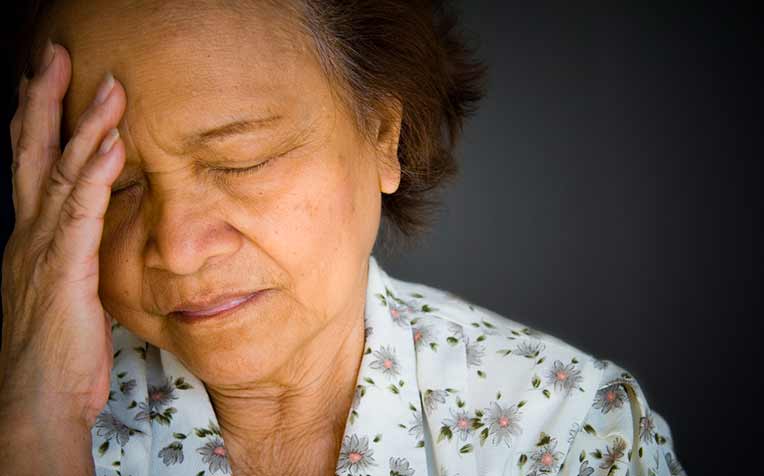
Ortostatic Hypotension (postural hypotension) when tested positive in those 65 and above, often is caused by underlying medical conditions.
Orthostatic hypotension or postural hypotension, is the sudden drop in blood pressure when a person stands up from a sitting or lying position. Even though it isn't a disease, it is a cause for concern because sufferers, particularly the elderly, may seriously hurt themselves by falling or fainting.
Drops in blood pressure when changing positions may cause momentary dizziness.
A healthy person recovers in less than a minute and the dizziness does not pose a problem. But in a more susceptible person, a change in blood pressure may cause prolonged dizziness, blurred vision or even a blackout.
“Standing up from rest, the time taken for compensatory mechanisms in the body to maintain constant blood circulation throughout the body, particularly to the brain, is what causes some people to feel giddy for a fleeting moment,” said Dr Gilbert Tan, Assistant Director, Clinical Services, SingHealth Polyclinics, a member of the SingHealth group.
Orthostatic hypotension (postural hypotension): Why it occurs
Dr Tan explained that the pressure required to move blood to the organs depends on three main factors:
- Heart - which needs to be strong enough to pump blood around the body
- Blood vessels - which must be able to constrict or dilate properly
- Adequate supply of blood within the vessels
If any of these are affected, the body cannot adequately adjust to the changes in blood pressure, and the person may become disorientated or faint.
In orthostatic hypotension, the body cannot compensate fast enough for the drop in blood pressure caused by a change in posture. Not enough blood reaches the brain and it becomes deprived of oxygen.
More serious symptoms apart from light-headedness and dizziness include confusion and blurred vision, within seconds to a few minutes of standing. Symptoms may worsen after exercise or a heavy meal.
The symptoms can resolve quickly if the patient immediately lies down. Otherwise the patient may fall or faint.
How is orthostatic hypotension (postural hypotension) diagnosed
To diagnose orthostatic hypotension, the patient’s blood pressure is taken after five minutes of lying down, then measured again when upright for a minute, and then again three minutes later.
“The patient has the condition if the systolic blood pressure drops by more than 20mm Hg and the diastolic blood pressure by more than 10mm Hg after standing,” said Dr Tan.
Orthostatic hypotension is a cause for concern especially in an older person, because it may be due to underlying medical conditions.
“Around one in 10 people above 65, who test positive for orthostatic hypotension, have underlying medical conditions such as heart failure, stroke or chronic kidney disease.”
Common causes of or thostatic hypotension include heart conditions affecting circulation (such as heart failure), prolonged bed rest, kidney conditions affecting the regulation of the circulatory system, and the use of medication to treat hypertension (such as calcium channel blockers).
Another type of medication called loop diuretics, used to treat conditions relating to excessive fluid retention in the body, may also trigger orthostatic hypotension. They can cause an imbalance of salts and electrolytes in the body, affecting the regulation of fluid balance and blood pressure.
Tips to manage orthostatic hypotension (postural hypotension)
“The approach to orthostatic hypotension is to try to find out the cause and correct it, so as to address the root of the problem. Equally important is the need to educate patients on how to manage this condition,” said Dr Tan.
- Mild symptoms - the simple remedy is to sit or lie down immediately if one feels light-headed when standing up. If drugs are the culprit, the dose may be adjusted or stopped entirely.
- Severe cases - a controlled increased salt (sodium) intake or special types of medication that retain sodium may help lessen symptoms
- Simple lifestyle changes also helps - Dr Tan advices avoiding prolonged bed rest, and to rise slowly from a lying or sitting position.
“In addition, avoid drinking alcohol and eating large meals, especially highcarbohydrate meals. Rest after meals. Stay well-hydrated. Avoid hot showers and minimise physical activity, especially in hot weather. I always remind my older patients to wait a while after standing up, before walking off,” said Dr Tan.
Contributed by


















 Get it on Google Play
Get it on Google Play